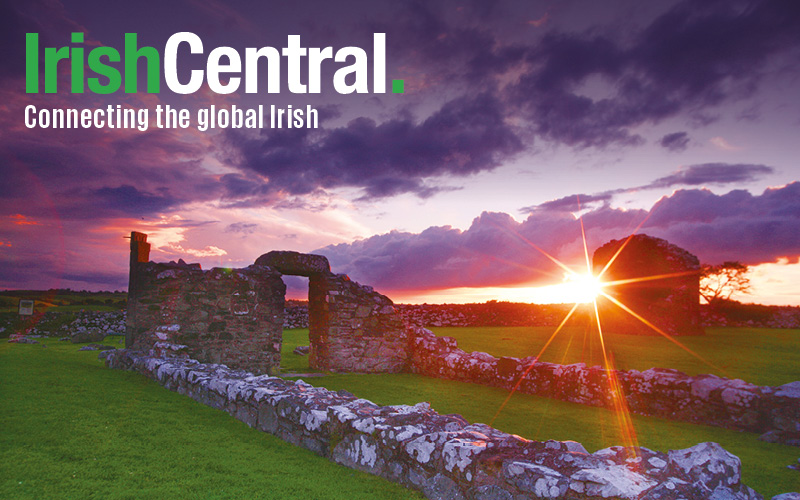I grew up in a part of north Greenwich Village which today is known as the Meatpacking District, home to the privileged obnoxious. When I was a kid back in the 1950s and ’60s it was indeed a meatpacking district. The most common sight around the corner from my parochial school was white-coated men—with gruesome blood stains on their coats—pushing huge animal carcasses around on hooks. This was a true working class neighborhood. The docks were still alive, as was the High Line, and a lot of my boyhood pals had fathers who were longshoremen.
The parish was St. Bernard’s on West 14th Street and even as a child I was aware how the church was the sun to the planets that fed off it. Call it Catholic Commerce. And several of these planets were funeral parlors. Three, if I recall correctly: Donovan’s, Redden’s and Heffernan’s—all Irish in what was still a heavily Irish parish—all within a block of St. Bernard’s. Redden’s, renowned for the great work they did in the time of AIDS, is the only one that survives. By the way, the florists in the neighborhood did okay too.
In those days, it was not uncommon for the altar boys to disappear from class for a High Requiem mass in the middle of the morning. They would roll the shiny mahogany coffin down the center aisle as the organ in the balcony let out a dirge. Then it was off to Calvary Cemetery in Queens for the burial. One also got the impression that the Church also owned the soil that the dearly departed was about to be dropped into.
Read more: Catholic Church bans scattering of ashes as “pantheism”
But that was another time. Today Americans, including Catholics, are downsizing and the downsizing goes all the way to how one disposes of Aunt Nellie. If you have a family plot you’re in luck. If you don’t, it probably means being microwaved out of this vale of tears.
But what do we do with Aunt Nellie’s ashes?
Thank God the Catholic Church is still on the job.
According to the New York Times, “…the Vatican responded to what it called an ‘unstoppable increase’ in cremation and issued guidelines barring the scattering of ashes ‘in the air, on land, at sea or in some other way.” (The headline read: “…Rules for Cremation: Bury, Don’t Scatter” which reminded me somehow of how James Bond liked his martini: “Shaken, not stirred.”)
And the Vatican doesn’t want you to keep Aunt Nellie on the mantelpiece or make her into a broach either. “The Vatican decreed,” the Times story noted, “that the ashes of loved ones have no place in the home, and certainly not in jewelry. It urged that cremated remains be preserved in cemeteries or other approved sacred places.”
The man in charge of these pronouncements, Cardinal Gerhard Ludwig Müller, who is the prefect of the Congregation for the Doctrine of the Faith, declared: “We believe in the resurrection of the body, so burial is the normal form for the Christian faithful, especially Catholics, whom we are addressing in this document.”
The Cardinal went on to say: “The cadaver of a deceased person is not the private property of the family, but the deceased is the son of God, part of the body of Christ, of the people of God.”
The Church may be right in how it views how the remains of Catholics should be handled, but it’s apparent they are also realizing that finances have played a significant part in the rise of cremation. The average American funeral can cost as much as $7,000 to $10,000, so it is no wonder that over 40% of Americans today prefer cremation. It’s a tough decision, but also a financial one.
When my own mother died in 1989 she was cremated. I asked the good people who run Glasnevin Cemetery in Dublin what were the rules regarding cremation. They now have cremation burial sites, I was told. They also said that my family grave was full—with my great-grandmother, my paternal grandparents, two uncles and an aunt—but cremated remains could still be interred there. I had the marker updated to include my mother’s details and headed home to Dublin for the burial.
On a raw November day I walked to the St. Bridget’s section of Glasnevin with one of the local gravediggers, my mother’s cremation box under my arm. He planted the mother, leaned on his shovel, and waxed philosophical. “You know,” he said, “this is a grand place to be buried.”
In grief and agitated, I tersely said, “How so?”
“Does yer man see that wall over there?” I nodded. “Well, over that wall is the Botanical Gardens!”
My annoyance evaporated and the gravedigger saw his tip doubled. I retreated through the south gate to John Kavanagh’s “Gravediggers Pub” for a pint, confident that my mother’s ashes were content in her native Dublin soil and wondering how long it would take me to join her.
* Dermot McEvoy is the author of the "The 13th Apostle: A Novel of a Dublin Family, Michael Collins, and the Irish Uprising" and "Our Lady of Greenwich Village," now available in paperback from Skyhorse Publishing. He may be reached at [email protected]. Follow him at www.dermotmcevoy.com. Follow The 13th Apostle on Facebook at Facebook.com/13thApostleMcEvoy.




Comments